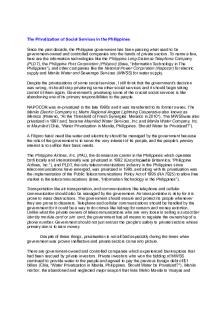Hadrami Sayyids in the sufism of Malabar DOCX

| Title | Hadrami Sayyids in the sufism of Malabar |
|---|---|
| Author | H. Kallen |
| Pages | 9 |
| File Size | 42.9 KB |
| File Type | DOCX |
| Total Downloads | 54 |
| Total Views | 254 |
Summary
1 HADRAMIS IN MALABAR SUFISM Dr. Hussain Randathani The migration of Hadrami sayyids to Malabar region of Kerala produced tremendous changes in the life and culture of Muslims of Kerala as happened elsewhere in the Indian Ocean coasts. Their migration was mainly to the Malabar region, the north of K...
Description
1 HADRAMIS IN MALABAR SUFISM Dr. Hussain Randathani The migration of Hadrami sayyids to Malabar region of Kerala produced tremendous changes in the life and culture of Muslims of Kerala as happened elsewhere in the Indian Ocean coasts. Their migration was mainly to the Malabar region, the north of Kerala where the rulers have been very cordial towards the immigrants from the Middle East. The Zamorins, rulers of Calicut and later the Vellatiris, the rulers of Valluvanad, and the Kolathiris of the Northern Malabar accorded all facilities to the migrants particularly those from Arab lands in order to develop foreign trade in their respective principalities. The policy of equity and justice, characteristic of the Zamorins 'rule and the complete security of person and property that the Zamorins vouchsafed to all those who frequented their dominions had attracted many trading communities to Calicut among whom the Arabs predominated. As told by Barabosa "the king gave each one (Moorish merchant) a Nair to guard and serve him, a Chetty scribe for his accountant and to take care of his property and a broker for his trade."1 The friendship developed between the Zamorins and the Arabs became so close that in the ninth century a Zmorins is said to have embraced Islam and presented a rob of honour (khil'a) to Ka'ba.2 Many Hadrami traders and preachers had settled themselves at Calicut. When Sufsm developed into tariqas many sufs from Arab lands migrated here and maintained their hospices. Ibn Battuta says that, a monastery was maintained in Calicut to reside for the spiritual leaders and Arab Muslims. Here oferings were made in the name of Shaikh Abu Ishaq Gazeruni (d.1034). Shaikh Shihabuddin Gazeruni was the head of the monastery.3 Abu Ishaq Ibrahim Gazeruni belonged to Shiraz in Persia and died at Gazerun. The suf order called Gazeruniyya was started in his name. It was believed that the oferings in his name were efective safeguard against the perils in seatravel to India and China. A monastery in his name was also maintained at Zaitun in China.4 It was the tolerance and respect shown by the Zamorin towards the Muslims that attracted Shaikh Sayyid Jifri, a prominent Ba Alawi suf of Hadhramaut to come and settle at Calicut in 1746 A.D. He was received by Manavikraman, the Zamorin along with Muhyaddin b. Abdussalam, the qazi of Calicut. The king requested the shaikh to settle at Calicut and granted him a coconut groove on the banks of the Kallai river and a land and a house near the pond at Kuttichira. He was exempted from all the taxes.5 Following Shaikh Jifri his brother Hasan Jifri reached Calicut in 1754 AD. He later settled at Tirurangadi. More members from the Jifri and other Ba Alawi sayyid families migrated to Malabar and settled at various parts. Quilandy became a centre of sayyid families from Hadhramaut. Other centres of Ba Alawi migration were Koilandy, Pantalayani, Kadalundi, Ponnani,...
Similar Free PDFs
Popular Institutions
- Tinajero National High School - Annex
- Politeknik Caltex Riau
- Yokohama City University
- SGT University
- University of Al-Qadisiyah
- Divine Word College of Vigan
- Techniek College Rotterdam
- Universidade de Santiago
- Universiti Teknologi MARA Cawangan Johor Kampus Pasir Gudang
- Poltekkes Kemenkes Yogyakarta
- Baguio City National High School
- Colegio san marcos
- preparatoria uno
- Centro de Bachillerato Tecnológico Industrial y de Servicios No. 107
- Dalian Maritime University
- Quang Trung Secondary School
- Colegio Tecnológico en Informática
- Corporación Regional de Educación Superior
- Grupo CEDVA
- Dar Al Uloom University
- Centro de Estudios Preuniversitarios de la Universidad Nacional de Ingeniería
- 上智大学
- Aakash International School, Nuna Majara
- San Felipe Neri Catholic School
- Kang Chiao International School - New Taipei City
- Misamis Occidental National High School
- Institución Educativa Escuela Normal Juan Ladrilleros
- Kolehiyo ng Pantukan
- Batanes State College
- Instituto Continental
- Sekolah Menengah Kejuruan Kesehatan Kaltara (Tarakan)
- Colegio de La Inmaculada Concepcion - Cebu















